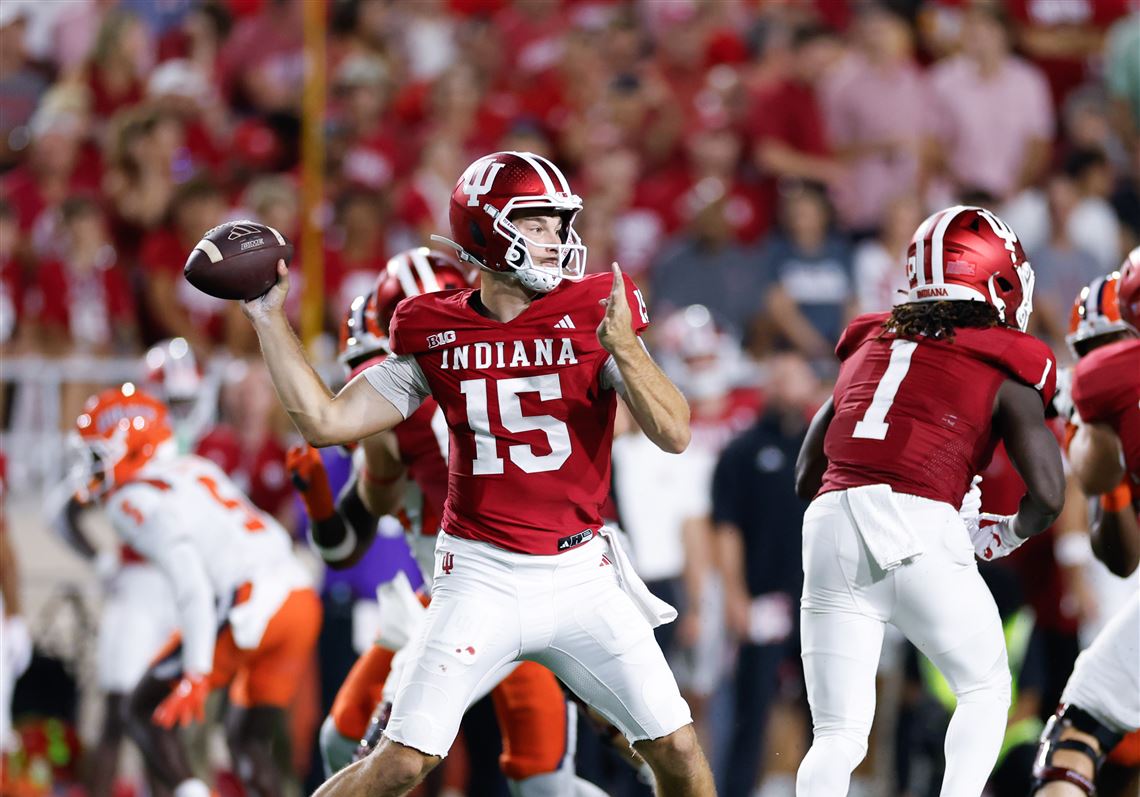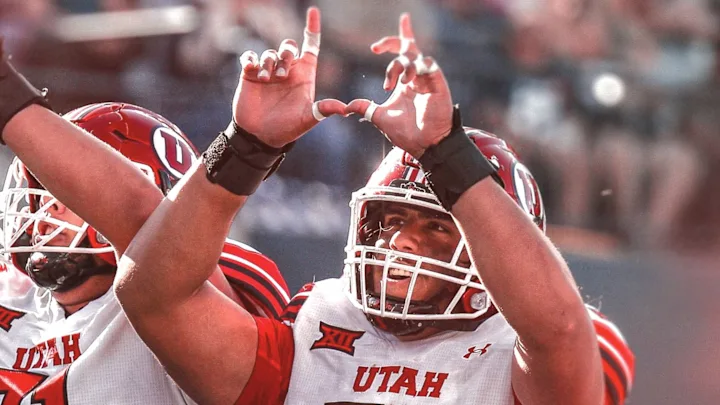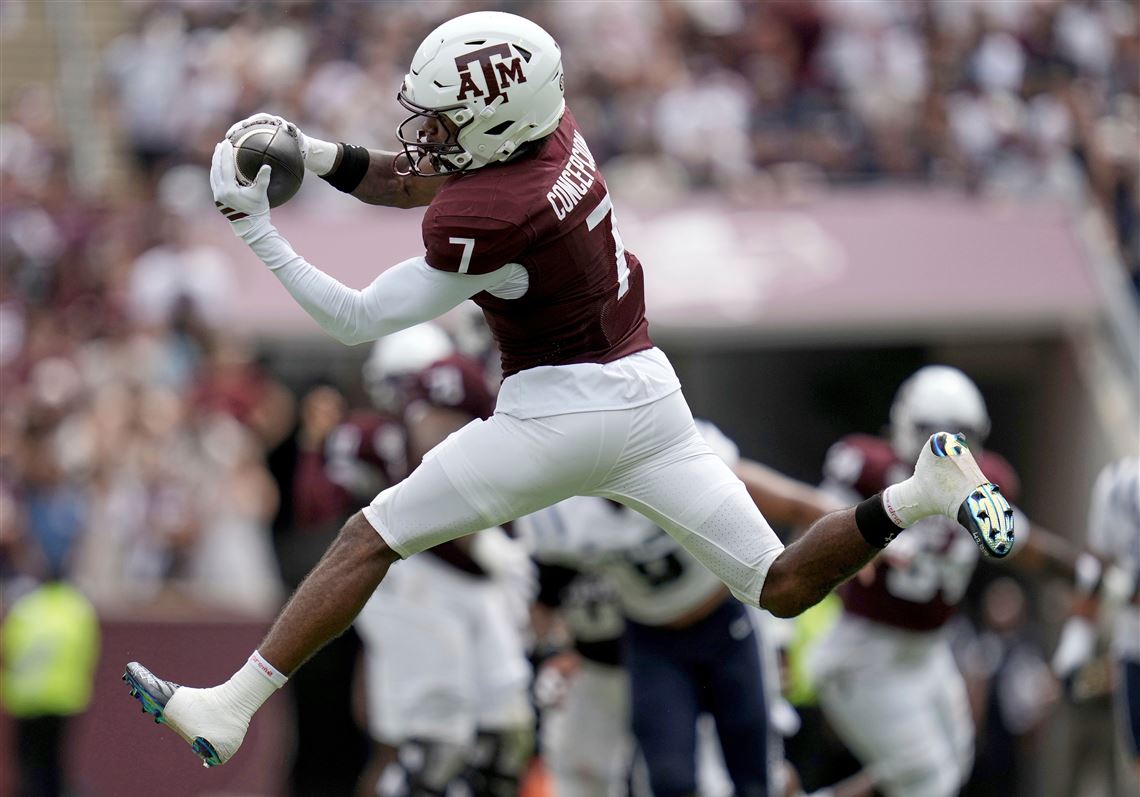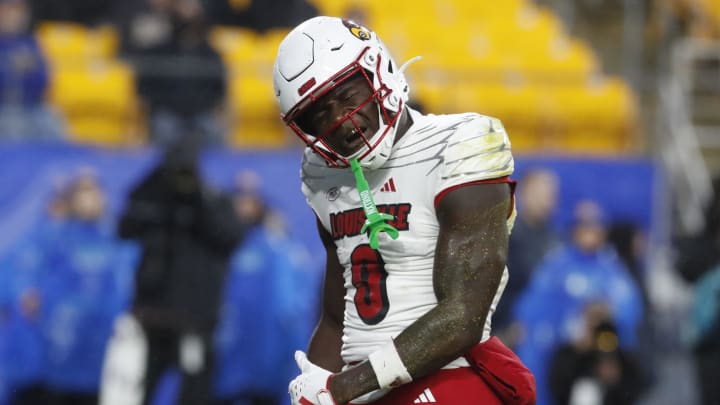By Charlie Campbell.
Send Charlie an e-mail here: [email protected]
Follow Charlie on Twitter @draftcampbell for updates.
This page was last updated April 6, 2018. Follow me @walterfootball for updates.
Position Review: Tight Ends
Tight End Class
Early-round talent: C-
Mid-round: B-
Late-round: C-
Overall grade: C-
2018 prospects vs 2017
O.J. Howard
Evan Engram
David Njoku
Hayden Hurst
Gerald Everett
Adam Shaheen
Mark Andrews
Dallas Goedert
Mark Gesicki
Jonnu Smith
Jordan Aikens
Dalton Schultz
Michael Roberts
Jake Butt
Durham Smythe
Troy Fumagalli
Last year, I dished out a rare A+ for the 2017 tight end class. I wrote then, “It could go down as one of the best tight end classes in league history as there are good prospects for all three days of the draft.” As one could expect, the college ranks were unable to produce a class like that two years in a row and there is a huge dropoff from the 2017 class this year.
If you were to merge the two classes, it wouldn’t look good for the 2018 prospects. Hayden Hurst is the best tight end in the 2018 class, and as a prospect, he is behind all of the 2017 first-rounders of O.J. Howard, Evan Engram and David Njoku. Hurst would be on a par with 2017’ss second-round tight ends like Gerald Everett and Adam Shaheen. Mark Andrews, Dallas Goedert and Mike Gesicki would be third-round caliber players if you put these two classes together. Jordan Aikens and Dalton Schultz would be late third-rounders and early fourth-rounders, similar to Jonnu Smith. Durham Smythe and Troy Fumagalli would be behind Jake Butt and George Kittle, who went at the top of the fifth round in the 2017 NFL Draft.
Safest Pick: Hayden Hurst, South Carolina

Not many college tight ends coming into the NFL are balanced players, but Hurst is the exception. He is a mismatch receiver who combines speed, athleticism, hands and size to give defenses a lot of problems. As a blocker, Hurst is a solid contributor who uses his size and strength to be effective while also showing a willing attitude. In the 2018 NFL Draft, Hurst is the top tight end and the safest of the prospects to develop into a quality starter.
My track record here is decent. Henry has been solid through two seasons. Walford was a solid role player for Oakland before being let go. Ebron was a disappointment as a top-10 pick, but he has flashed and has carved out a role that he can be a contributor in. Ertz is one of the best tight ends in the NFL.
2017: O.J. Howard
2016: Hunter Henry
2015: Clive Walford
2014: Eric Ebron
2013: Zach Ertz
Biggest Bust Potential: Jordan Aikens, Central Florida

Aikens could end up going on the second day of the 2018 NFL Draft, but he is also a limited player. As a receiver, Aikens is a solid contributor who has some quickness and route-running. However, the 6-foot-3, 249-pounder is undersized and struggles as a blocker. He looks like a backup or rotational tight end for the NFL, but I wouldn’t be surprised if his receiving ability is just decent and his weakness as a blocker limits his playing time. Of the tight ends who could go in the early rounds of the 2018 NFL Draft, Aikens has the most bust potential to me.
My track record here is good, but Shaheen could end up spoiling it since he flashed as a rookie. Vannett hasn’t impressed through two years, but it is too early to say he’s a bust. O’Leary was a sixth-round pick, so you can’t say he is a true bust even though he didn’t stick with the Bills. Amaro was a bust for the Jets, and Escobar was a bust as a second-round pick for Dallas, never coming close to expectations while being allowed to leave in free agency.
2017: Adam Shaheen
2016: Nick Vannett
2015: Nick O’Leary
2014: Jace Amaro
2013: Gavin Escobar
Tight End Rankings by Attributes
Pass Receiving:
NFL prototype: Rob Gronkowski, Patriots
- Hayden Hurst
- Mark Andrews
- Mike Gesicki
- Jordan Aikens
- Dallas Goedert
- Dalton Schultz
- Troy Fumagalli
- Durham Smythe
Recap: The NFL has evolved to the point where tight ends are a critical part to a potent passing attack. Some teams have better receiving weapons at tight end than they do at receiver. The league is driven by passing, so if a tight end can’t contribute as a receiver, he could have a hard time seeing the field. The 2018 NFL Draft has some tight ends who can do damage as receivers.
Hurst is a phenomenal athlete who presents serious mismatch problems for a defense. He has big size and leaping ability to make catches even when he is covered by a defensive back. Hurst also has the speed to separate, and that can be seen with linebackers being incapable of running with him. Safeties also can struggle to run with Hurst and keep him from getting open. Hurst also has reliable hands and is tremendous after the catch. He runs through tackles and gets yards after contact downfield. Hurst is superb at working the middle seam with his quickness to get to the second level. Via good route-running and his speed, Hurst can consistently get open. He tracks the ball well, adjusts to passes with fluid athleticism, and is a real red-zone threat. With his frame and speed, Hurst is dynamic receiving threat for a tight end.
Andrews could be a nice contributor as a receiver. Oklahoma often split Andrews out and had him run routes out of the slot. Andrews can use his quickness, athleticism, and size to have nice run-after-the-catch ability. He has the skill set to be a receiving threat down the seam and in the red zone, like he was in college. Andrews possesses the quickness to get downfield and shows impressive speed in the open field to pull away from defenders. He has soft hands, is a fluid athlete, and has the size to make receptions over defensive backs. Andrews runs quality routes, is adept to find the soft spots in zone, and is a good athlete. He should be an red-zone asset in the NFL.
Gesicki is a receiving tight end who could hurt defenses with his mismatch problems. He is a good athlete and has some real quickness. Gesicki runs well down the seam and possesses the speed to get vertical. His impressive athletic ability translates to him having excellent body control and leaping ability. With his talent to jump above defenders, Gesicki is very dangerous at high pointing the ball and boxing out defenders to make leaping grabs. He routinely hangs above defenders to make leaping grabs in the middle of the field. His speed and agility also make him a good route-runner who can generate separation. With his quickness, size, and leaping ability, Gesicki is a dangerous red-zone weapon for the NFL. Gesicki is ranked behind Hurst and Andrews because Gesicki dropped too many passes.
Aikens is a smooth route-runner who finds the soft spot in zone and has enough quickness with sudden athleticism to generate separation. He is fluid in space and dangerous when working down the seam. Aikens does not have great size, so he won’t present that mismatch ability against NFL linebackers and some safeties.
Goedert should have the ability to contribute as a receiver in the NFL. While he will struggle to separate from NFL linebackers or safeties, he can use his size and high-point ability to make catches over defenders. He will be an asset in the red zone with his skills to sky high and make tremendous catches with body control and uncanny one-handed skills. Goedert is adept at finding the soft spot in zone coverage, and his size makes him tough to tackle for defensive backs. Thus, Goedert could be a quality receiving tight end in the pros, but he probably won’t be elite given the lack of speed, suddenness, and ability to separate.
Schultz is a good route-runner, excellent at catching the ball, and has functional size. He didn’t get a lot of opportunities at Stanford, but he impressed when given the chance.
Fumagalli flashed as a receiver for Wisconsin. He turned in good production over the past two seasons, but late in his senior year and at the Senior Bowl, Fumagalli struggled to separate. Smythe also flashed at times for Notre Dame, but he is more of a backup tight end for the NFL.
Blocking:
NFL prototype: Marcedes Lewis, Jaguars
- Hayden Hurst
- Dalton Schultz
- Durham Smythe
- Dallas Goedert
- Troy Fumagalli
- Mark Andrews
- Jordan Aikens
- Mike Gesicki
Recap: Blocking ability is still important for NFL tight ends; not just in the ground game, but in pass protection. Teams like their tight ends to have the ability to help tackles when they’re going against an elite edge-rusher.
As a blocker, Hurst has size and strength with the ability to win his blocks. He gives an effort and was a quality contributor to the Gamecocks’ rushing offense. His blocking should improve with pro coaching, but he enters the NFL as a plus blocker and significantly better than most receiving tight end prospects for the NFL.
Schultz was a very good blocker for Stanford. He has functional strength, developed technique, and fights hard. He helped open a lot of holes for Bryce Love in 2017. Schultz’s blocking ability will be an asset in the NFL.
Smythe, Goedert and Fumagalli have the potential to be solid contributors in the NFL. They all give an effort and have enough size, but they aren’t as effective as the top-two choices.
As a blocker, Andrews needs a lot of work. He enters the NFL as a below-average blocker. He needs to improve his technique and also block with more urgency. In speaking to team sources, they do think that Andrews has the potential to be effective blocker in the NFL. He has the size, strength and frame to work with.
Aikens has limitations as a blocker in part due to his size. He probably won’t be used much to block in the NFL.
Team sources have remarked to me that Gesicki is a horrendous blocker, which was evident when watching Penn State. He needs a ton of work at it. Defensive ends and linebackers routinely beat the blocks from Gesicki, but he even struggled to block defensive backs. In order for Gesicki to become a three-down starter in the NFL, his blocking ability is going to need massive improvement. Right now, he’s a huge liability as a blocker.
Red Zone:
NFL prototype: Antonio Gates, Chargers
- Mark Andrews
- Dallas Goedert
- Mike Gesicki
- Hayden Hurst
- Troy Fumagalli
- Dalton Schultz
- Durham Smythe
- Jordan Aikens
Recap: Tight ends are critical players in the red zone. Multiple tight ends are needed for goal-line packages. Many teams also like to use double-tight end sets inside the 20-yard line. A tight end who is a big target with sure hands and leaping ability is a good weapon to help produce touchdowns instead of field goals.
Andrews was a point scorer in Oklahoma’s juggernaut offense. He notched 22 touchdowns over the past three seasons. He is very dangerous in the red zone as well as running down the seam, crossing the field, running fades in the corner, and making leaping grabs over defenders. With his size, quickness, and athleticism, Andrews is an excellent red-zone receiver.
Goedert should be an asset in the red zone. Routinely, he uses his size and high-point ability to make catches over defenders. Goedert will be an asset in the red zone with his skills to sky high and make tremendous catches via body control and uncanny one-handed skills. If he can repeat what he did in college, Goedert could be one of the better red-zone tight ends in the NFL.
Hurst has the skill set to be a really good red-zone contributor. His size and quickness make him a mismatch problem near the end zone, but he also is such a good blocker that should be on the field in goal-line situations. Hurst didn’t produce a big touchdown total at South Carolina, but he also wasn’t given many opportunities. He did have a rushing touchdown last year on a sweep, however. Hurst’s versatility and upside make me rank him ahead of players who scored more often in college.
Gesicki is on a par or better than Andrews, Goedert and Hurst as a red-zone receiver. The reason he is ranked fourth is because he is such a bad blocker that teams may not want him in the game inside the 10-yard line, which would thereby limit his red-zone contributions. In the 10-20 yard range, Gesicki could be a good red-zone weapon. Given his talent to jump above defenders, Gesicki is very dangerous at high pointing the ball and boxing out defenders to make leaping grabs. He routinely hangs above defenders to make leaping grabs. With his quickness, size, and leaping ability, Gesicki is a dangerous red-zone weapon for the NFL.
Fumagalli and Schultz both have the receiving ability to contribute in the red zone while also being solid blockers to be on the field. Schultz is a sleeper who could surprise with how effective he ends up being as a pro.
Smythe could be a red-zone contributor. He has size to contribute as a receiver, and his blocking could get him on the field at the goal line. Aikens notched six touchdowns over the past two seasons. He doesn’t have the size to be a mismatch weapon, and his blocking limitations hurt how he can contribute in the red zone.
Hands:
NFL prototype: Jason Witten, Cowboys
- Hayden Hurst
- Mark Andrews
- Dalton Schultz
- Troy Fumagalli
- Durham Smythe
- Jordan Aikens
- Dallas Goedert
- Mike Gesicki
Recap: Tight ends with bad hands don’t get thrown the ball often in the NFL. They have a hard time seeing the field and end up only playing in goal-line situations and on special teams. In the group above, there isn’t a player who I would say has bad hands.
Hurst and Andrews have the best hands of this group. I think Hurst is the most sure-handed overall. Andrews has really soft hands and is a natural hands catcher. Schultz, Fumagalli, Smythe and Aikens were generally reliable. Once in awhile, you would see a drop from Aikens.
Goedert dropped a lot of passes in college, but he was also thrown a ton of passes and made a plethora of spectacular receptions. Goedert had more drops in part because he saw so many more attempts. Gesicki had too many drops and needs to improve the consistency of his hands for the NFL.
H-back:
NFL prototype: Charles Clay, Bills
- Jordan Aikens
- Hayden Hurst
- Mike Gesicki
- Dalton Schultz
- Mark Andrews
- Troy Fumagalli
- Dallas Goedert
- Durham Smythe
Recap: Many offensive coordinators like tight ends with the flexibility to line up as an H-back. That allows them to set up more mismatches and align blocking schemes differently. Not all tight ends have the athletic ability and quickness to pull off H-back responsibilities. Aaron Hernandez was superb at it for New England and was the prototype a few years ago. Charles Clay is the best now.
Aikens projects as the best H-back tight ends of this group. He has the build to go with with his quickness and athleticism. Hurst would be a big H-back, but he has the explosive speed and athletic ability to execute. That also could be seen in his rushing touchdown last year. Gesicki has the speed and athletic ability such that he could be a taller H-back.
Schultz, Andrews and Fumagalli aren’t natural fits for it, but they have the athleticism and quickness to possibly execute as H-backs. Goedert and Smythe don’t look like fits for H-back.
Yards After Catch:
NFL prototype: Ron Gronkowski, Patriots
- Hayden Hurst
- Mark Andrews
- Mike Gesicki
- Jordan Aikens
- Troy Fumagalli
- Dalton Schultz
- Dallas Goedert
- Durham Smythe
Recap: There are some tight ends in the NFL who are very dangerous with the ball in their hands. Having the ability to pick up yards after the catch – YAC – is not an easy trait to find in tight ends. This class has some amazing YAC tight ends.
Hurst is tremendous after the catch. He runs through tackles and gets YAC downfield. He also has a burst with surprising speed to run away from tacklers and bolt downfield. In the NFL, Hurst has the potential to be one of the better YAC receiving tight ends.
Andrews uses his quickness, athleticism and size to have nice YAC ability. He has the skill set to be a receiving threat down the seam and the quickness to get downfield, showing impressive speed in the open field to pull away from defenders.
Gesicki’s speed and agility also make him a good route runner who can generate separation. Once he gets the ball in his hands, he can bolt downfield and use his athleticism to make defenders miss. As a pro, he should be a good YAC receiver.
Aikens is a YAC threat for the NFL. He is quick and has enough size to make it hard for defensive backs to control him. Fumagalli showed some YAC potential at Wisconsin. He was a threat to break tackles and get downfield after making receptions.
Goedert could provide some YAC on some receptions, but he won’t be a big-time threat in this regard because he struggles to generate separation. Thus, a lot of catches will result in quick tackles in the NFL. Smythe won’t be a big YAC tight end as defenders will close on him quickly.
NFL Picks - Dec. 28
2026 NFL Mock Draft - Dec. 24
NFL Power Rankings - Dec. 23
Fantasy Football Rankings - Sept. 1




